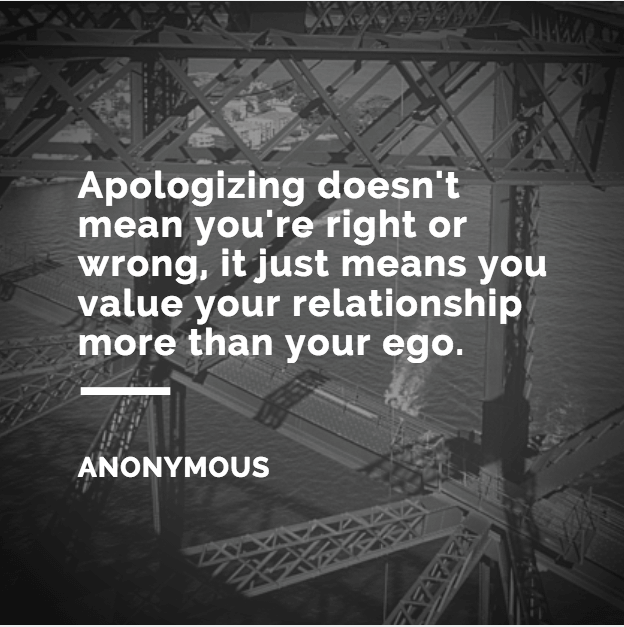While an apology is primarily about salvaging relationships, they’re also about building stronger ones.
Owning your missteps resolves conflict, establishes your “agency,” and opens new channels of communication for better relationships.
That’s true in life, and it’s certainly true in business.
A couple of years ago I unintentionally—I can’t emphasize that enough—wrote something that raised eyebrows internally with a client.
I offered a new spin on an initiative the client wasn’t prepared to address.
That seems innocuous enough, but there were political implications of which I wasn’t aware.
It was my job to choose words very carefully, and in this case I made a royal mess of it.
I had that dreadful sinking feeling that comes from watching something go terribly wrong in slow motion. I put the very people who chose me to work for them in an awkward spot.
The Resolution
The resolution?
Naturally it’s the apology. If done well.
But, I knew I needed to offer a personal note in addition to the “official” line.
Now, the crackerjack team here at Spin Sucks—including the network of talented contributors has covered this topic extensively here, here, and again here.
Corporate and business crisis communication requires fast facts, and some of that logic applies here, too.
How to Craft a Better Apology
Here’s how I set out to craft an apology that counts:
Be sincere: Really. Take a look at the relationship from their vantage. Tell them what they need to hear.
Address the specific issue: You know what it is. Use your own language, but something along the lines of I’m sorry for such and such…”
Be timely but careful: Allow time for cooler heads to prevail, but beware of legal pitfalls. Perfectapology.com—inspired by Inc magazine—offers guidance with that here.
Address the consequences: You probably know already, but fair warning, there may be more to the story. Be prepared, and lead with something like “I know it caused you such and such…”
Choose the format carefully: Phone calls or written notes are the most personal, and either will do just fine.
Conclude there, or go the extra mile and:
Offer an alternative for what you should have done: Just make sure you know the complete backstory.
Offer to repair the damage: Setting it right shows commitment to their business and your relationship.
Listen: This is hard, but give it a try. Let them vent, and you just might gain a new perspective.
Learn: Walk away with new insight. You owe it to yourself and your clients to be wiser next time.
What’s in an Apology?
It’s both easier and harder to follow this than you might think. Although, I’m sure glad I did. I felt relieved, and the client appreciated the extra care.
Let me leave you with this thought: It’s always different when you see the person on the other end.
Personal messages delivered with sincerity humanize the experience.
Chances are those clients have been in the same spot, and appreciate the moxie required to deliver an apology in person. When they see that, it makes a lasting impression.
Relationships are by nature complicated, requiring constant cultivation and care. Acknowledging that with open, honest, and sincere personal communication establishes the framework for your strongest business relationships yet.
Chances are you’ve been in this spot and had to think about how to craft an apology. What would you add to this?
photo credit: The sheer genius of Gini Dietrich, an anonymous quote, and Canva
